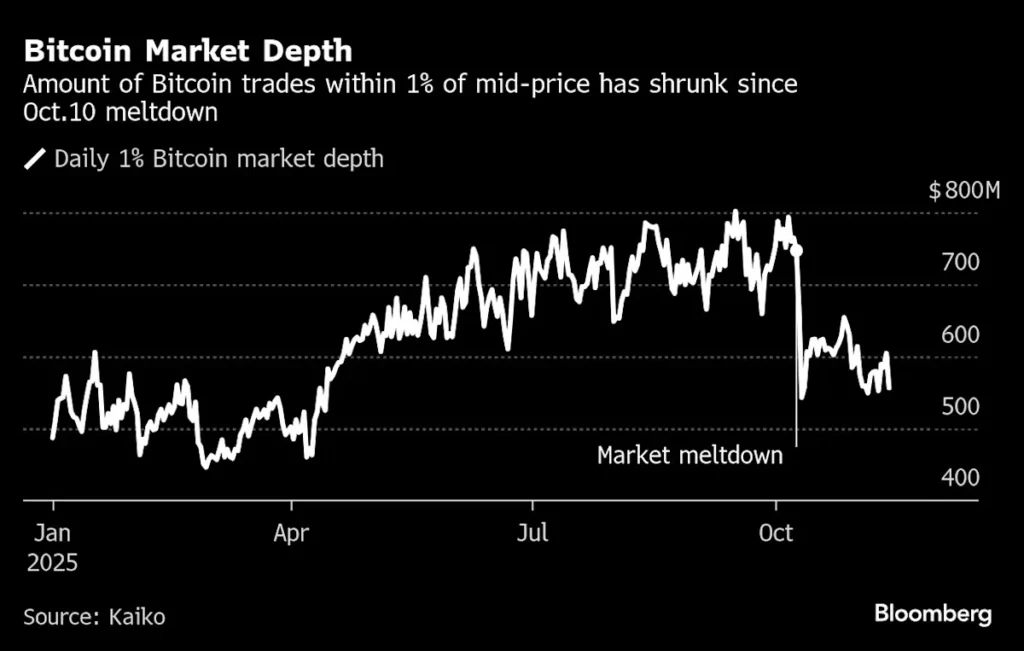(Bloomberg)– The asset once expected to “go to the moon” is struggling to keep pace with Treasuries. Bitcoin has fallen nearly 30% from its 2025 peak, lagging everything from tech stocks to Treasuries.
Once touted as a high-growth coin, a hedge against inflation and a means of portfolio diversification, the world’s largest cryptocurrency now faces the prospect of ending the year in the red – without fulfilling any of those roles.
Most read on Bloomberg
Gold — often considered obsolete by Bitcoin proponents — easily outperforms the token, which crypto devotees have dubbed digital gold. The same is true for long-term bonds and the Nasdaq, in a year marked by falling interest rates and diminishing risk appetite.
The underperformance is even more glaring compared to the benchmarks that Bitcoin was supposed to outperform. The MSCI Emerging Markets Index is up sharply this year, and even the U.S. Utilities Index – synonymous with low volatility and low-growth stability – has outpaced Bitcoin’s decline.
On Tuesday, Bitcoin briefly fell below $90,000 – roughly the average entry price of all ETF flows since their launch – meaning the typical ETF investor was, for at least a while, underwater. The largest cryptocurrency broke out from a seven-month low but was down about 1% at $91,499 as of 6:10 a.m. in New York on Wednesday.
For many, this was supposed to be crypto’s watershed year. A pro-crypto White House, new rules allowing the launch of exchange-traded funds through tokens, and a wave of institutional inflows had seemingly secured digital assets a place in traditional finance. Instead, for investors who bought near the highs, the story of Bitcoin in 2025 seems familiar: a burst of euphoria, a crash, and growing disbelief.
Once touted as an inflation hedge, growth engine, and uncorrelated store of value, the token has failed on all counts in recent times. Volatile? Always. Reliable? Less and less.
This is important for professional investors. In diversified portfolios, Bitcoin failed to offset losses from tariff-related selloffs or amplify gains during rallies. Nor did it act independently when other markets became volatile. For fund managers who viewed crypto as a strategic addition, the disappointment goes beyond performance: it goes to the core.
Theories about what went wrong vary. Some blame the violent October crash, which wiped out about $19 billion in leveraged positions and left deep psychological scars on the market. “October 10 is definitely a more lasting shock to the market than it seems at first glance,” said George Mandres, senior trader at XBTO Trading. “Even though market participants will try to forget or ignore it, it will remain deeply rooted in the appetite of market makers to provide liquidity as well as the conviction and risk appetite of market participants.”




